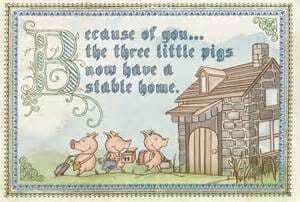If you enjoy reading books about leadership, or inspirational books, you will recognize a lot of what Wayne Elsey does with his brief book Grip & Rip Leadership for Social Impact.
Using a catch-phrase to brand his books. Listing traits and qualities that make a good leader. Relentlessly focusing on the individual and what you can do, not the structure of the organization you work in, and not the political or economic constraints you face.
The great thing about this book is that makes it seem so simple to start improving things where you are right now. And the drawback of the book? It makes things seem so simple.
The Best Thing in the Book is the Stories
I don’t remember Elsey’s seven principles right after I read them, and I don’t think it would make much difference if I did. They are pitched at too general a level to be of much use day to day. For me, and I suspect for many nonprofit professionals, the best part of the book will be the stories.
Michele was hired to work with major donors, then assigned to write grant proposals. Her boss forced her to lie about the organization’s budget. Terrible leadership!
The VP of Development at another nonprofit was told it was impossible to send out acknowledgments within 48 hours. She tested by doing the work herself.
She asked for a couple hundred unopened donation envelopes delivered to her office. Then she personally set time aside to see how long it would take for her to open the envelope, scan the information, look up the donor in the database, key in the necessary information, check amount, and create a batch.
By doing it personally, she found a way to do it faster. Model leadership!
Transforming a Nonprofit via Servant Leadership
Elsey advocates something called “transformational servant leadership,” but he doesn’t really explain it. If you want to grasp the concept, Tripp Braden’s blog Developing Serving Leaders is a better place to start.
But Elsey makes clear that you’re not going to get anything worthwhile done unless you do it as a team. I admire what he does in chapter 12, where he shows how a leader can empower the team she or he works with. For example:
- If you want to change your colleagues’ attitude, model the change yourself
- Support their work by investing in their training and professional development.
- Set clear expectations, provide resources, and hold people accountable.
- Encourage experimentation, and learn from failure.
- Pay a living wage so your staff can make a commitment to their work.
Figuring out how to do these things would take a longer book. But Elsey has given us some good places to start. If you are NOT someone who usually reads leadership manuals or inspirational writing, you needn’t linger over it, but you should read it, take notes, and put the good ideas to work.



